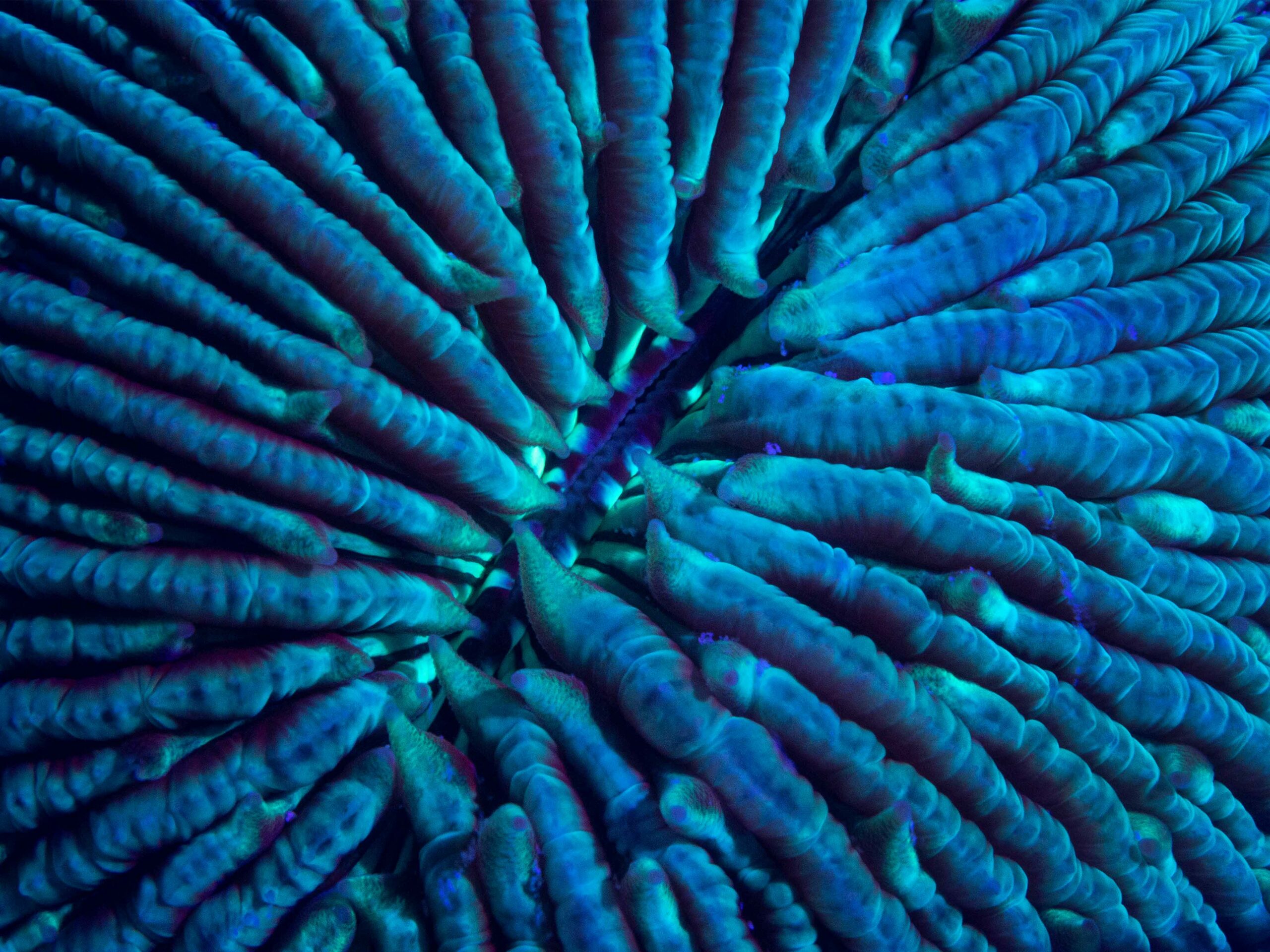 Listen to this article
•
15:34 min
Listen to this article
•
15:34 min
It is five o’clock on a warm Andaman evening, and I am waiting on the beach, hopping about to escape the relentless mosquitoes. As the sun begins to dip behind the island, I call out, “let’s go!”. For dive professionals on Havelock Island, sunsets are stunning cues to signal to divers that night diving can begin. Coral reefs in the Andamans fringe so close to the shore that sometimes one does not require a boat to get to them and can merely dive within a minutes’ walk from the beach.
We strap the scuba tanks onto our backs, switch on our underwater torches and wade into the shallow sea. Once it gets deep enough to float, we wear our fins, put on our masks, and descend into a familiar patch of the reef. The pitch-blackness and scattering torchlights make it seem like a heist. Fish dart around, and you must skilfully manoeuvre around rocks that spring up seemingly out of nowhere. Disorientation at first is natural, especially if you have not yet ascertained which way is up.

At night, most coral polyps expose their tentacles. In this picture, a colony of soft coral has come to life by stretching its tentacles to catch its daily meal. Photo: Vardhan Patankar
Cover photo: Corals have pigments in their tissues that can produce fluorescence. These pigments create spectacular shades of neon that can be viewed under a UV or blue light and is best seen at night. Cover photo: Umeed Mistry
When the sun sets for the day, the ocean undergoes a dramatic transformation in appearance and animal activity. Corals are almost unrecognisable to the naked eye, the vibrantly coloured fish are missing, camouflaged hunters like stonefish become easier to spot, more tiny creatures swimming around your face, and urchins have now colonised the reef. This is the night shift taking over the coral reef.
The mere disappearance of light creates a whole new set of unique challenges for marine life. Not being able to see, for instance, renders attributes like colourfulness (the hallmark of reef life) almost entirely useless at night. In coping with darkness, the evolution of the night shift has brought about some of the most incredible adaptations in animal senses, behaviours, and communities. Nocturnal life often rivals what you would imagine lived in outer space.

Colours of the night
We typically begin our night dives around dusk, taking advantage of the diminishing light to get our bearings easily. Parrotfish, damselfish, butterflyfish, and other vibrant diurnal fish become instantly scarce. The more predominant colour among nocturnal fishes tends towards metallic silvers and reds (when seen with torchlight). The pigments of these colours reflect little to no light in the ocean, offering the perfect camouflage for prey and predators tiptoeing in the dark.
Chasing plankton
The ocean is like a soup of plankton that gets thicker by night. Phyto- and zooplankton are an assortment of micro-, milli-, and nanoscopic plants and animals forming the foundations of life in the ocean. Plankters inhabit every layer of the ocean in large numbers. But their presence is most conspicuous at night when they light up the water with their magnificent bioluminescence while swimming so close that they sometimes tickle you in the ears.
Zooplankton actively feed at night when most of their predators are asleep. In fact, the largest migration on Earth is the vertical migration of plankton from the depths of the ocean to the shallows every night. Plankters must still dodge a slew of predators, from large fish to small crustaceans, that stake out at night to satiate their hunger.
Cryptic crustacean delight
A common tendency among divers is to zip around the coral reef in the hope of seeing as much of the space in the limited time available. This often yields poor results and sprinting around is not safe at night. Instead, it’s best to take the time to stop and look for less obvious yet mind-blowing creatures. My favourites include the magnificent array of crustaceans that come out of their dens to hunt and scavenge.
From massive lobsters and dazzling crabs to tiny cleaner shrimps, crustaceans seem more comfortable being active in the dark. Crustaceans can be spotted easily, even from a distance, by locating their eyeshine under the beam of a torch. While crustaceans are an important prey base for reef predators, they also play a significant role in the nutrient cycle, consuming decomposing matter off rocks, sandy beds and sometimes other animals.
We save the best part of the experience for last — invoking bioluminescence. We start by finding a safe spot away from the sand and rocks, then block the beam of our torch lights so that we are blanketed by darkness for a moment. We then proceed to flail our arms rapidly and are immediately surrounded by firefly-like spots of light — hundreds of thousands of plankton producing bioluminescence.
After a perfect goodbye to the underwater world, we bob up to the surface only to find a star-studded black canvas above us, perfectly mirroring the one we just left behind.










